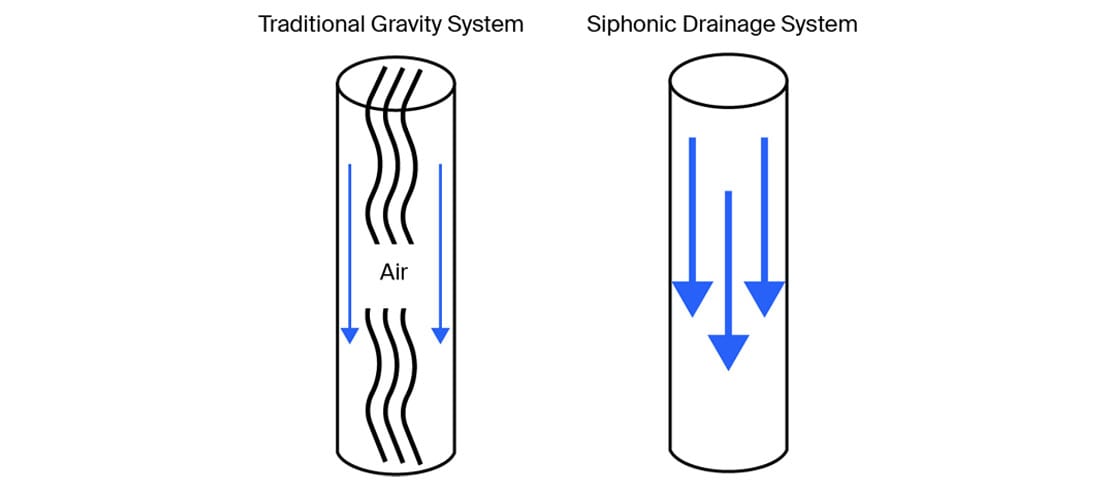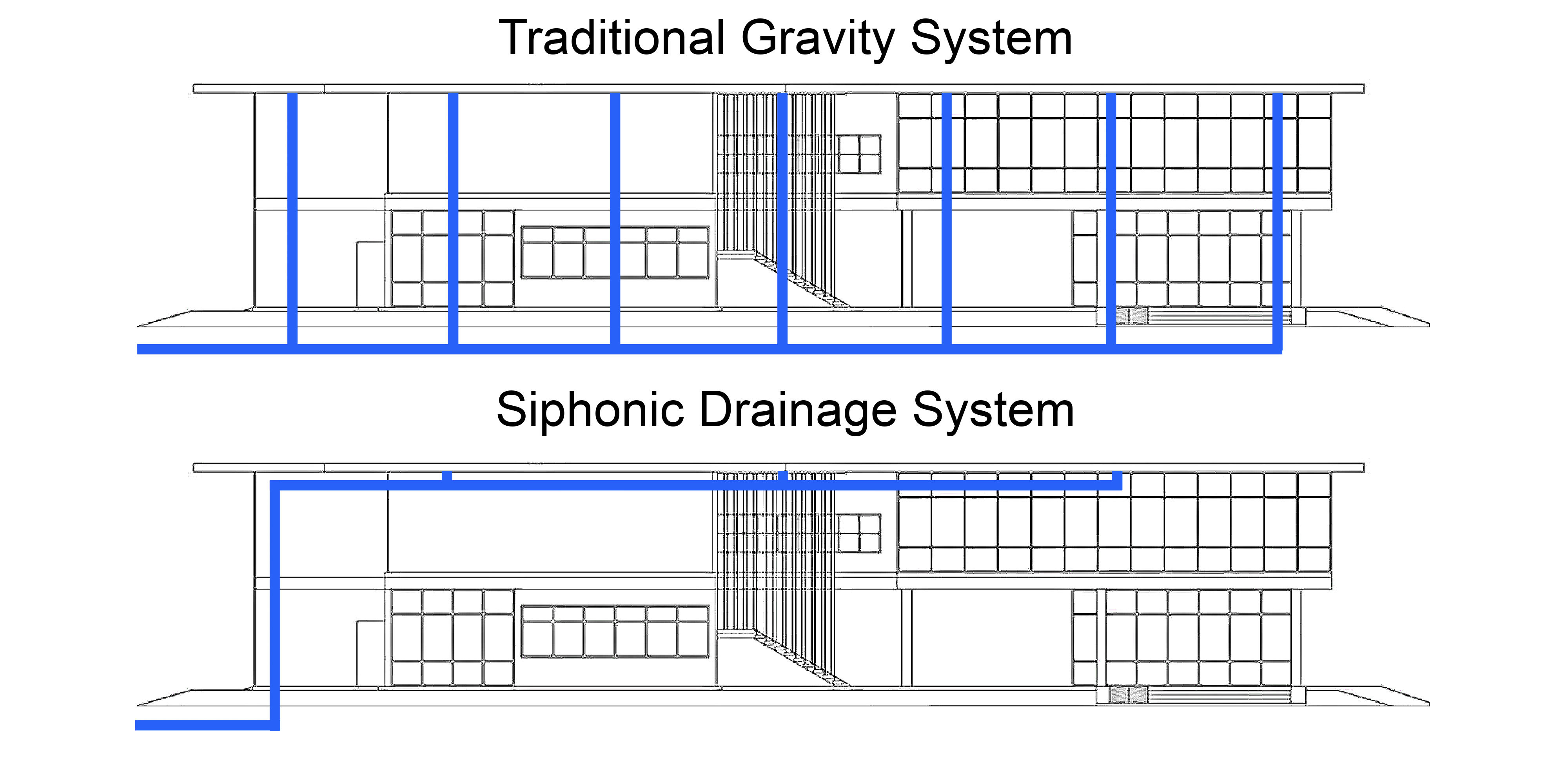
What are siphonic drainage systems?
- Read time: 4 minutes
- Date: 14 Dec 2021
- Roof Drainage
Siphonic drainage systems prevent air from entering the downpipes. This allows higher volumes of water to drain more quickly from flat roofs, which means fewer, smaller diameter downpipes are required.
How do siphonic drainage systems work?
Traditional gravity drainage systems create a whirlpool effect, which allows water and air to enter the pipe. The presence of air creates a vortex, which pushes the water to the edges of the pipe. This means less water can drain, and so bigger downpipes are required to compensate. Water needs gravity to drain, so if there is no slope on the roof or on horizontal pipework, standing water will accumulate.
Outlets for siphonic drainage systems are fitted with a baffle plate, which restricts air from entering the system. In very low levels of rain, it works in the same way as a gravity system. However, as rainfall increases and the water reaches a specific head level, the baffle plate only allows water to enter the system. This means it ‘runs full’ creating negative pressure which sucks standing water into the drainage system – it operates in a similar way to emptying a fish tank.

What are the benefits of a siphonic drainage system?
Siphonic drainage systems are much more efficient than gravity drainage systems. By preventing air from entering the system, each gutter only requires one or two smaller diameter downpipes, which can be located at the ends of the building. This frees up floor space and eliminates the need for internal underground drainage and significantly reduces the requirement for external underground drainage.
A gradient is not required for horizontal collector pipes, which can be situated much closer to the gutter. And there will be less water retained on the roof during heavy rain because the system will drain faster.

Where are siphonic drainage systems used?
Siphonic drainage systems are usually installed on large industrial, storage and retail buildings, where it is difficult to effectively drain the roof using a gravity drainage system.
Can a siphonic drainage system be fitted to any new roof?
Yes, providing they are correctly designed and installed in accordance with BS8490: 2007 and rainfall intensity should be determined in accordance with BS EN 12056-3: 2000. Filling time and gutter calculations must also be carried out to ensure that the system fills within one minute and does not exceed the gutter capacity (sometimes referred to as over-topping).
The design and installation of siphonic systems are a specialist trade and works should only be carried out by specialists. Should the systems not be calculated or installed correctly it can result in water not being drained effectively from the roof. This can cause flooding, or in the worst case scenario roof collapse from the excess weight of the water. The trade association SRDA can provide advice for those interested in this type of system.






